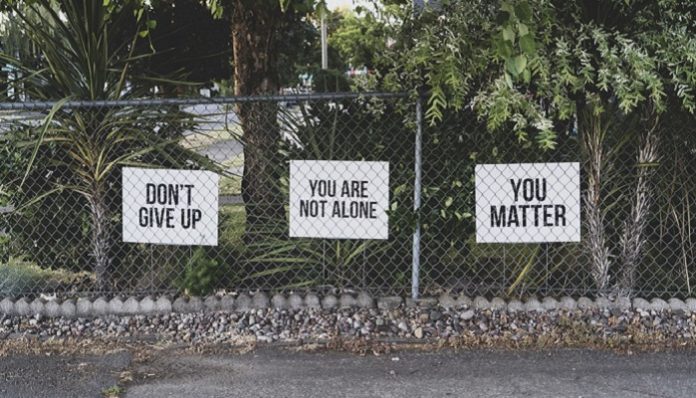
Today, on September 10, we observe World Suicide Prevention Day.
Personally, I have thought about committing suicide since I was four and my mother told me how my father had passed away. You see, ironically, my father had lost his life during the same month that we universally strive to prevent suicides. As I got older, it became painfully clear that I was subject to the same mental illness that my father was rumored to have. In that spirit, I struggled for nearly two decades with the same inner demons I can only imagine echoed inside the mind of my father. After my third attempt to take my own life, I finally received the help I desperately needed to save my life.
I share my story to end the stigma.
Suicide does not discriminate against any single group. It can affect anyone regardless of age, gender, race, or background. My father’s mental illness was rumored but never diagnosed. Suicide is very often the result of untreated mental illness or mental health condition.
While suicidal thoughts are not uncommon, they are most certainly not normal. They often point to more serious problems. It can be incredibly scary to hear someone we love have suicidal thoughts. It can be even more disheartening to suffer alone with your own thoughts of giving up or not wanting to continue with your life. It’s imperative to take these thoughts seriously. As the adage goes, suicide is a permanent solution to (often) temporary problems.
The CDC states that suicide rates have increased by 30% since 1999. We lost nearly 45,000 lives in the US to suicide in 2016. Suicidal thoughts often begin as suicidal ideation, such as “Nothing will ever change” or “I don’t want to wake up anymore.” After someone ends their life through suicide, survivors are left grappling with pain, stigma, and an inability to understand.
While today is World Suicide Prevention Day, September is National Suicide Prevention Awareness Month as well.
The warning signs vary, but may include:
- (increased) alcohol and drug use
- aggressive behavior
- social withdrawal
- mood swings
- impulsive or reckless behavior
Remember: suicidal warning signs are serious, but suicidal behaviors are a medical emergency.
According to NAMI (National Alliance On Mental Illness), if you or a loved one starts to take any of these steps, seek immediate help or call 911:
- collecting and saving pills
- buying a weapon
- giving away possessions
- tying up loose ends, like organizing personal papers or paying off debts
- saying goodbye to friends and family
Moreover, while suicide may feel as if it comes out of nowhere, nearly 50% of victims had a known mental health condition.
However, not all sufferers of mental illnesses will attempt suicide. Hence, there are additional risk factors:
- family history of suicide,
- substance abuse; drugs can exacerbate mental highs and lows, which can worsen suicidal thoughts,
- inebriation; a shocking 1 in 3 people who die from suicide are under the influence of alcohol,
- access to firearms,
- serious or chronic medical illness,
- gender; while no gender is safe from this horrible occurrence, males are more than 4x more likely to die by suicide,
- history of trauma or abuse,
- prolonged stress,
- recent tragedy or loss.
Seeing any of these disturbing signs can be very overwhelming. Moreover, talking can be even more difficult. Check out NAMI’s September 2019 blog for discussing suicide with someone.
Crisis resources are key! Call 911 immediately if you suspect an emergency. Call the National Suicide Hotline if you are in crisis or are experiencing difficult or suicidal thoughts: 1-800-273 TALK (8255). Furthermore, some of us have notorious phone anxiety, which is why there’s an excellent texting feature. Text NAMI to 741-741 to be connected to a free, trained crisis counselor on the Crisis Text Line.
Suicide prevention must be discussed year-round, but September provides a devoted space to shine a light on the darkness. Helping remove the stigma of suicide can save countless lives. I have experienced bleak, hopeless moments so I’m here to tell you that you can heal and thrive. There is hope.
Featured image via Dan Meyers on Unsplash


















